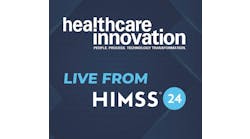Several public health experts and organizations point to information systems and work force issues as key to revitalization.
Brian Dixon, Ph.D., director of public health informatics and an associate professor at the Indiana University Richard M. Fairbanks School of Public Health as well as the Regenstrief Institute’s Center for Biomedical Informatics, says there is a lot that the Biden administration could invest in.
In terms of information systems, public health is today where healthcare providers were in the 1990s and early 2000s, he says. “Most public health workers have a computer on their desk with Internet access, and they use information systems, but they’re mostly fragmented systems. There’s an HIV system and an STD system and a tuberculosis system, but these things weren’t connected. The pandemic highlighted that those systems are not connected to the healthcare delivery system,” Dixon explains. “A lot of what has happened during the pandemic was bootstrapping for exporting data electronically for public health. During a pandemic, it’s crazy that we are doing a lot of faxing in 2021, when we have the capability to submit data electronically.”
The investments, he adds, would be in those kind of standard information flows, standardized processes and systems that can interconnect public health internally, and then connect them to healthcare systems. (Prior to the pandemic, the annual federal budget for public health data infrastructure was only $50 million.)
One concern is that there tends to be huge investment in public health and emergency preparedness in the wake of an actual emergency but then it gets ignored or defunded when things return to normal. On the other hand, during an emergency is not the best time to be implementing new systems or hiring staff. “You can’t hire the firefighters while the house burns,” says Brian Castrucci, Dr.PH, president and chief executive officer of the de Beaumont Foundation, a philanthropic organization focused on public health practice.
Castrucci contends that the country needs a comprehensive national public health infrastructure that incorporates all of our HITECH Act investment in electronic medical record (EMR) systems. “I don’t know about you, but I’m still waiting for my return on that $27 billion loan I gave healthcare,” he says. “We spend $750 billion a year on defense. When was the last time a foreign nation took 450,000 American lives on American soil? What we have to understand as a nation is that our security, our safety, and our economic prosperity are going to be dependent on having a robust public health system,” he stresses. “We now see what happens when you defund public health. We’ve seen what happens when you have too many holes in the fence, and we’re vulnerable.”
Workforce issues
Local health departments lost 20 percent of their jobs nationwide after the 2008 recession, and although they added 3 percent of that lost workforce back between 2016 and 2019, the increases have not kept up with demand. In addition, local agency funding is unpredictable from year to year, Casalotti notes, “and oftentimes, it’s really siloed and tied to particular diseases or programs. You might be able to continue to have a diabetes educator because you keep getting that grant, but when there were workforce cuts, you lost a lot of your utility players or cross-cutting positions that weren’t attached to one disease.”
A good example is public information officers, she explains. COVID has highlighted how important that role is. If you can’t communicate, you’re not going to get everyone on board, and then you’re going to continue to have unmitigated spread. “Another challenge has been is that we’ve lost a lot of our registered nurses,” Casalotti says, “and those are the individuals who can work across programs. When you’re dealing with something like this pandemic, you need that clinical expertise in your health department.”
Over the last 10 years, we have seen the retirement of people who’ve been in public health service for a long time, Dixon adds. “Also, the curriculum for public health hasn’t really evolved. The emphasis has been on traditional public health methods. We need to put more emphasis on modern methods like data science and informatics, so that individuals who graduate now and in the future in public health will have some understanding about information systems and how to use them, and what kind of requirements they should be asking for when they’re in agencies, because if the users are largely uninformed of how to use systems, then they’re going to be content with faxes and manual data entry and typical methods that we’ve used in the past.”
“We’ve lost 60,000 jobs since 2008,” Castrucci says. So when we needed to stand up an army of disease intervention specialists, we didn’t have the ones who were experienced to begin with, because we cut them a long time ago. It’s not just the epidemiologists, it is an entire public health infrastructure that needs to be able to flexed up,” he notes. “When you flex, you have to flex on a foundation that’s strong. And we cut beyond the muscle into the bone. Even if we had 2,000 disease intervention specialists who were willing to come from the community that we could train up to do this work, who would supervise them?”
The budget reconciliation bill working its way through Congress currently includes $7.6 billion for awards to state, local, and territorial public health departments for staff to serve as case investigators, contact tracers, social support specialists, community health workers, public health nurses, disease intervention specialists, epidemiologists, program managers, laboratory personnel, and informaticians.
Back to the status quo?
There is a danger we will go back to standard operating procedure after the public health emergency ends. “I worry about that a lot,” Dixon says, “because we’ve seen that pattern happen before: After the emergent threat is gone, we forget about public health, we forget about the need for planning, and we just assume it’s going to be there when we need it, he says. “I think there’s a real danger of doing that again this time around. That’s why we need to make some commitments, both politically and financially and, in our workforce, so that we are prepared for the next pandemic.”
Castrucci is a bit pessimistic that things will change. “I think that the second the first shot went into somebody’s arm, the likelihood of us funding public health started to drop,” he says. “Because once we get past it, once we’ve demonstrated that science can save us, are we going to invest in the idea that something bad could happen again?” He said many sectors of the economy are going to be turning to Congress for help. “Do we really think public health is going to be at the front of that line? We don’t electioneer. We don’t lobby. So how is that money coming down? And I’m not talking about scraps. I’m not talking about just $50 million. I’m talking about a thoughtful investment.”




